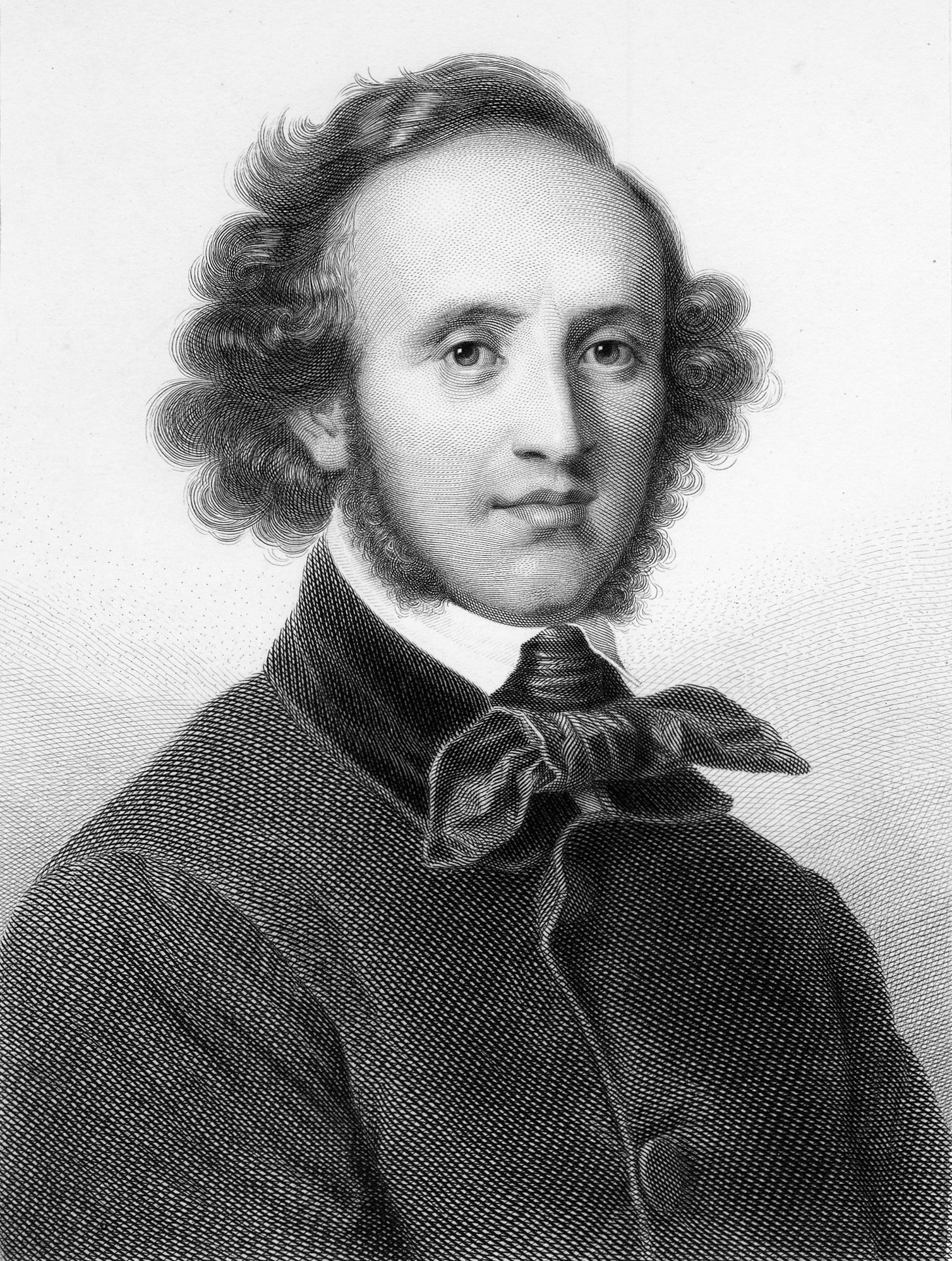Mendelssohn << MEHN duhl suhn >>, Felix (1809-1847), was a German composer who was widely known and respected in his time. Mendelssohn also gained fame as a conductor and pianist. He also played a significant role in reviving interest in the music of German composer Johann Sebastian Bach. Mendelssohn held high standards of excellence in composition, performance, and musical training that have had an enormous effect on musicians in the 1800’s and 1900’s.

His life.
Mendelssohn was born on Feb. 3, 1809, in Hamburg, Germany. He was the son of a wealthy banker and grandson of the German-Jewish philosopher Moses Mendelssohn. Many of Mendelssohn’s ancestors were Jewish, but his father became Protestant after the family moved to Berlin in 1811. At that time, they added Bartholdy to their last name as a sign of their Protestantism. Mendelssohn’s full name was Jakob Ludwig Felix Mendelssohn-Bartholdy.
Mendelssohn studied the piano with many respected teachers. He made his first public performance as a pianist when he was 9. When he was 10, he joined a choral society in Berlin called the Singakademie. The group performed Mendelssohn’s choral composition “Psalm 19” that same year. In following years, the group presented many of his works. A conductor at the Singakademie, Carl Friedrich Zelter, became Mendelssohn’s music teacher. Zelter introduced Mendelssohn to many musicians and intellectuals, including the German poet Johann Wolfgang von Goethe.
Although Mendelssohn continued performing during his teen-age years, he became increasingly interested in composition. When he was 17, he wrote an overture for A Midsummer Night’s Dream, a comedy by the English playwright William Shakespeare. Mendelssohn later composed additional music for the play, including the well-known “Wedding March.”
Loading the player...Wedding March by Felix Mendelssohn
Mendelssohn’s fame as a conductor, composer, and pianist grew rapidly during the 1830’s and 1840’s. He performed throughout Europe, making 10 trips to Great Britain. Britain’s Queen Victoria greatly admired Mendelssohn, and his music was popular with British audiences. Mendelssohn’s travels in England and Scotland inspired several compositions, including his overture The Hebrides (1832), also called Fingal’s Cave.
Loading the player...The Hebrides, or Fingal's Cave (overture)
One of Mendelssohn’s most significant achievements was his role in reviving the music of Johann Sebastian Bach. In 1829, he conducted a performance of Bach’s “Passion According to St. Matthew” (1729) at the Singakademie. It was the first time since Bach’s death that this work had been performed. This event and Mendelssohn’s enthusiasm for Bach’s music generated a great renewal of interest in the music of the composer.
In 1835, Mendelssohn became the conductor of the famous Gewandhaus (Cloth Hall) Orchestra in Leipzig, Germany, a great honor for such a young conductor. The orchestra thrived and became highly respected under his leadership. In 1843, Mendelssohn formed a music academy in Leipzig. He attracted many outstanding musicians to its faculty, including German composer Robert Schumann. In 1837, Mendelssohn married Cecile Jeanrenaud, with whom he had five children. He died on Nov. 4, 1847, from an undiagnosed illness when he was only 38.
His music.
Although Mendelssohn composed during the romantic period, his style grew directly from the classical music of the early 1800’s. Mendelssohn’s music adheres to traditional forms, emphasizes structural clarity, and contains many classical elements, including smooth progressions (changes) in harmony and counterpoint (combining several melodies at once). But his work has the emotion and dramatic intensity of romantic music. Also, like other romantic composers, Mendelssohn often found inspiration for his music in literature.
Mendelssohn wrote 12 early string symphonies, 4 later symphonies for full orchestra, and a choral symphony. The Reformation Symphony (1830), the 5th; the Italian Symphony(1833), the 4th; and the Scottish Symphony (1842), the 3rd, are the most frequently performed. Most notable among his other works for orchestra are two piano concertos (1831 and 1837) and an outstanding violin concerto (1845). Mendelssohn wrote numerous choral works with religious themes. The oratorios St. Paul (1836) and Elijah (1846) are the best known. Mendelssohn’s other works include eight collections of short piano pieces called Songs Without Words (1832-1843), incidental music for the theater, chamber compositions, and several operas.
Loading the player...Violin Concerto
